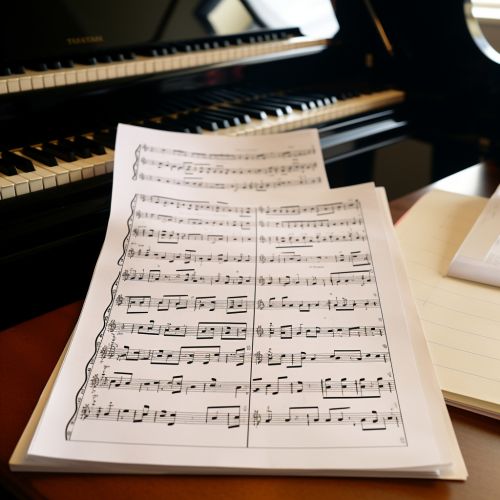Music Theory
Introduction
Music theory is the study of the practices and possibilities of music. It is derived from observation of, and involves hypothetical speculation about, how musicians and composers make music. The term also describes the academic study and analysis of fundamental elements of music such as pitch, rhythm, harmony, and form. The transmission of music theory in this sense may be found in oral and written music-making traditions, musical instruments, and other artifacts. For example, ancient instruments from Mesopotamia, India, and Peru, such as harps, lyres, and flutes, reveal aspects of the music theory of their cultures and how those theories influenced the structure of music.


Elements of Music
Music theory considers the fundamental building blocks of music, which are pitch, rhythm, harmony, and form.
Pitch
Pitch is a perceptual property of sounds that allows their ordering on a frequency-related scale. Pitches are compared as "higher" and "lower" in the sense associated with musical melodies. Pitch is a major auditory attribute of musical tones, along with duration, loudness, and timbre.
Rhythm
Rhythm is the arrangement of sounds and silences in time. Meter animates time in regular pulse groupings, called measures or bars. The time signature, sometimes called meter signature, is a convention that specifies how many beats are in each measure and which note value constitutes one beat.
Harmony
Harmony refers to the "vertical" sounds of pitches in music, which means pitches that are played or sung together at the same time to create a chord. In music, harmony is the process by which individual sounds are superimposed. In some sense, harmony can be thought of as the music's color.
Form
Musical form refers to the overall structure or plan of a piece of music, and it describes the layout of a composition as divided into sections. In the tenth edition of The Oxford Companion to Music, Percy Scholes defines musical form as "a series of strategies designed to find a successful mean between the opposite extremes of unrelieved repetition and unrelieved alteration."
History of Music Theory
The history of music theory is vast, spanning the ancient traditions of global cultures to the present day.
Ancient Music Theory
The earliest known written documents that contain musical theory are the cuneiform tablets and artifacts of the ancient Sumerians and their successors, the Babylonians. The study of music theory as a distinct discipline first occurred in ancient Greece. The philosopher Pythagoras is famously known for his discovery of the mathematical ratios that formed the basis of musical intervals.
Medieval Music Theory
During the medieval period, music theory was taught as part of the quadrivium, a medieval university curriculum that also included arithmetic, geometry, and astronomy. The study of music was considered essential for an understanding of God, due to the belief that music was a reflection of the mathematical principles that underpinned the universe.
Renaissance Music Theory
The Renaissance brought about a new freedom in the creation and use of harmony and form. Composers began to break away from the modes and started to develop what would become the tonal system, which is the basis of Western music today.
Modern Music Theory
In the 20th century, composers and music theorists pushed the boundaries of music theory with post-tonal theory, which seeks to analyze music that does not conform to traditional tonal harmony. This includes the music of many contemporary composers, as well as many forms of popular music.


Music Theory Education
Music theory is a significant part of music education and is often a required area of study for music students. It is usually broken down into a few components: ear training, sight-reading, and the study of harmony, counterpoint, and composition. In addition, music theory often includes the study of musical form, melody, texture, rhythm, and the construction of scales and chords.
